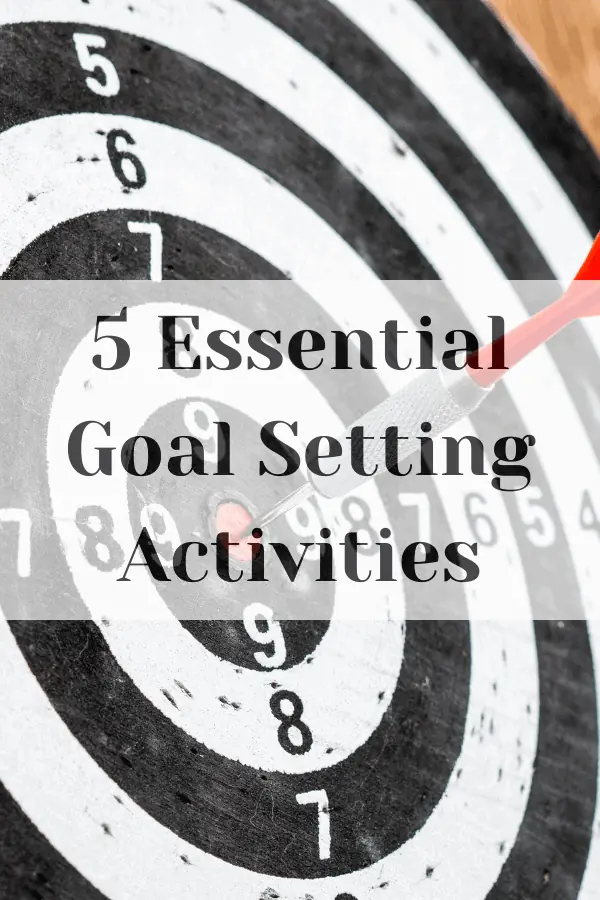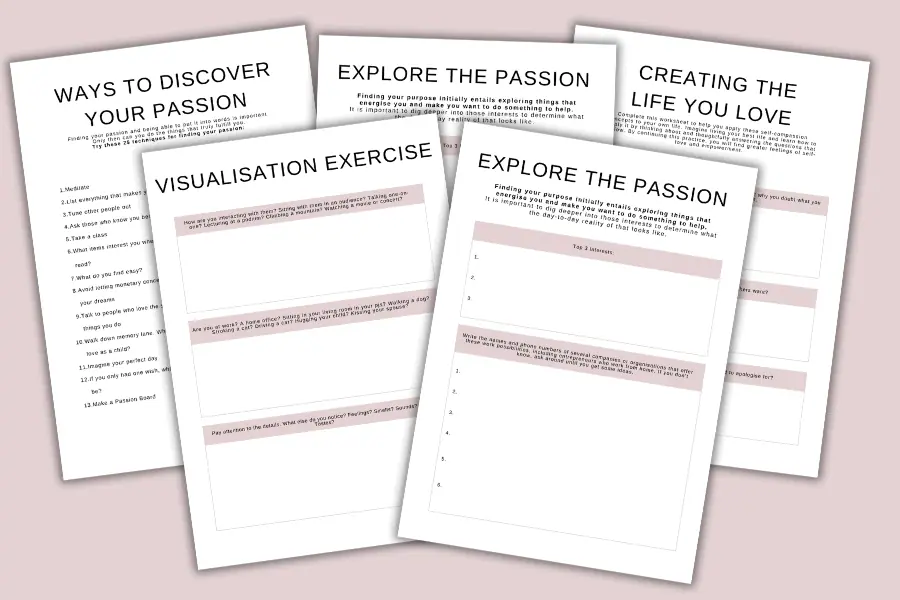How To Change Your Mindset From Negative To Positive

Did you know that you can learn how to change your mindset from negative to positive? Did you also know that this can have a massive, positive, impact on your mental health and your overall life?
If you consistently feel tired, fed up, lack motivation and are down all the time, let me walk you through how to change your mindset from negative to positive.
This post is about how to change your mindset from negative to positive

Impact Of A Negative Mindset
A negative mindset can have a significant impact on various aspects of a person’s life, including their emotions, behaviours, relationships, and overall well-being. Here are some common effects of a negative mindset:
Emotional impact
A negative mindset often leads to negative emotions such as sadness, anxiety, frustration, and hopelessness. Negative thoughts and beliefs can reinforce and intensify these emotions, creating a cycle of negativity that affects one’s mood and emotional well-being.
Reduced motivation and productivity
When someone has a negative mindset, they may experience a lack of motivation and struggle to maintain focus and productivity. Negative thoughts can drain energy and make it difficult to set and achieve goals, hindering personal and professional growth.
Strained relationships
Negativity can also impact relationships with others. Constant negativity and pessimism can push people away, as it can be emotionally draining to be around someone who always sees the worst in situations. It may become challenging to build and maintain meaningful connections.
Limited perspective and self-limiting beliefs
Negative thinking tends to narrow one’s perspective and limit their possibilities. It can create self-doubt, low self-esteem, and self-limiting beliefs, making it challenging to take risks or pursue new opportunities. This can lead to missed opportunities for personal and professional growth.
Physical health
Research suggests that chronic negativity and stress can have adverse effects on physical health. Constant exposure to stress hormones due to negative thinking can contribute to problems like high blood pressure, weakened immune system, digestive issues, and sleep disturbances.
Decreased overall well-being
A negative mindset can diminish one’s overall sense of well-being and satisfaction with life. It can create a pessimistic lens through which they perceive the world, making it difficult to find joy and appreciate positive experiences.
Impact on mental health
A negative mindset can contribute to the development or exacerbation of mental health issues such as depression, anxiety, and chronic stress. Negative thoughts and emotions can perpetuate a cycle of negative thinking, leading to a decline in mental well-being.
Understanding The Impact Of Mindset
Understanding the power of mindset is super important. It’s all about how our thoughts, emotions, and actions are influenced by our mindset. Think of it like the lens through which we see the world. The cool part is that our mindset isn’t set in stone – it can be changed!
It’s like rewiring our thinking patterns. By shifting to a positive mindset, you can start thinking more positively, feeling happier, and taking actions that align with your goals. It’s all about realising that you have the power to shape your mindset and create a brighter outlook on life.
Identifying Negative Thought Patterns
Identifying negative thinking patterns is a game-changer. It’s all about helping you become aware of those sneaky thoughts that bring you down. Learn to spot common cognitive distortions – those thinking traps that trick us into negative thinking.
One common distortion is all-or-nothing thinking, where things are seen as black or white, with no grey area in between. Another is over-generalisation, where one negative experience is blown out of proportion, making it seem like a never-ending pattern. And let’s not forget personalisation, where you blame yourself for things that aren’t your fault.
By recognising these patterns, you can break free from their grip and replace them with more balanced and realistic thoughts. It’s like turning on a light in a dark room. So, I encourage you to shine that light on your thinking and embrace a more positive and rational mindset.
Challenging Negative Thoughts
Question the evidence
When negative thoughts creep in, ask yourself to question the evidence behind them. Ask yourself, “Is there solid proof to support these thoughts?” Often, negative thoughts are based on assumptions or distorted perceptions rather than concrete facts. By examining the evidence objectively, you can begin to loosen their grip.
Explore alternative explanations
Next, explore alternative explanations for the situation. There are multiple perspectives and interpretations. By considering other possibilities, you can shift from a narrow, negative viewpoint to a broader, more balanced one. It’s like opening the door to new insights and understanding.
Adopt a more balanced perspective
Adopt a more balanced perspective by finding the middle ground between extremes. Remember, things are rarely all good or all bad. Focus on the shades of grey in between. By acknowledging the positives alongside the negatives, you can cultivate a more realistic and constructive outlook.
Embrace cognitive restructuring
The technique of cognitive restructuring. It’s like remodelling your thought patterns! Actively challenge negative thoughts by replacing them with more positive and rational ones. Question the accuracy and helpfulness of negative thoughts. By consciously reframing them, you can reshape your mindset.
Question the curiosity and kindness
Approach this process with curiosity and kindness toward yourself. This is a journey of self-discovery, not self-criticism. Replace self-judgment with self-compassion. By treating yourself with understanding and empathy, you can navigate the process of challenging negative thoughts more effectively.
Cultivating Self-Compassion
Having self-compassion is one of the best gifts you can give yourself. Here are some practical examples you can start to practice today.
Treat yourself as a friend
Treat yourself with the same kindness and understanding you would offer to a dear friend. Use self-talk that is supportive and gentle, especially during challenging times. It’s like being a best friend to yourself!
Embrace imperfections
You need to recognise that it’s okay to make mistakes and that imperfections are a natural part of being human. Let go of self-judgment and embrace self-acceptance.
Practice mindfulness
Practice mindfulness by being present in the moment without judgment. Observe your thoughts and emotions with curiosity and without harsh self-criticism. It’s like creating a safe space for self-reflection and growth.
Prioritise self-care
Prioritising self-care is an act of self-compassion. Engage in activities that nourish your well-being, such as taking breaks, engaging in hobbies, practising relaxation techniques, and setting boundaries.
Celebrate small wins
Celebrate your achievements, no matter how small. Recognise your efforts and progress along the way. It’s like cheering for yourself and acknowledging that every step forward is worth celebrating.
Importance Of Resilience
Forming resilience against everyday setbacks and ups and down is a crucial part of maintaining a positive mindset.
You will face setbacks throughout life, unfortunately, this is inevitable and out of your control. But what is in your control is how you react to them and it’s this that impacts our mindset and viewpoint on all circumstances we may face in our lives.
Shift the mindset from negative to positive
Developing the ability to bounce back from any setbacks, allows you to build resilience. It allows you to see the positive in all situations, rather than dwelling on the negatives. It’s about consciously shifting your perspective and responses.
Develop problem-solving skills
I would encourage you to develop problem-solving skills as a way to enhance resilience and maintain a positive mindset. If you tackle difficult situations with a mindset of ‘I can find a way out of this’, you will be amazed at what solutions you will find.
Seeking solution support
You need to remember that you are not alone, seek help from around you. If you surround yourself with others, you won’t feel alone, you can find understanding from others who are in a similar situation as well as encouragement. This helps maintain a positive mindset and build on your resilience.
Practice self-care
We’ve already covered this above, but I need to mention it again so you understand the importance of it. Self-care is not selfish, it’s a priority and should be a way of life for you. It’s okay to put yourself first.
Gratitude And Fostering A Positive Mindset
Framing your mindset and learning how to change your mindset from negative to positive can be achieved through gratitude. Looking at life from a different angle, seeing the positive aspect, and being grateful can be extremely impactful.
The benefits of gratitude and positive thinking
Practising gratitude allows you to appreciate and be thankful for the small things in life. It can enhance your overall well-being, increase your happiness, reduce stress and improve relationships. All of this has a positive impact on your mindset.
Keeping a gratitude journal
Start a gratitude journal as a powerful tool for fostering gratitude. Regularly write down things you are grateful for, big or small, in your daily life. This practice helps shift your focus towards the positive aspects and blessings, cultivating a mindset of appreciation.
Practising mindfulness
The practice of mindfulness is a way to cultivate positive thinking. Mindfulness involves being fully present in the moment and observing thoughts and emotions without judgment. Focus on the present, savour positive experiences, and let go of negative thoughts.
Reframing negative situations
You need to recognise that challenges and setbacks provide valuable opportunities for growth and resilience. Reframe negative thoughts by finding silver linings, lessons learned, or alternative perspectives.
Surround yourself with positivity
It’s really important to surround yourself with positive influences. Seek out uplifting books, inspiring podcasts, supportive friends, or motivational quotes. Being exposed to positivity can help reinforce a positive mindset and encourage optimistic thinking.
Surround Yourself With Positive Influences
Recognise the importance of people and your environment on your mindset
The people we surround ourselves with and the environment we inhabit can impact our mindset and outlook on life. Make sure you spend time with people who share your values and beliefs. Clear your environment of clutter and unused items and make space for yourself and your new ideas.
Seeking positive and supportive relationships
Cultivating positive relationships will support a healthy mindset. Surround yourself with people who uplift you and who you can be yourself around.
Create an environment that nurtures positivity and personal growth
Create an environment that fosters positivity and supports your personal growth journey. Explore new activities for a healthy mindset, such as yoga, reading or spending more time in nature.
Limiting exposure to negativity
If you know there are people or circumstances that cause your stress or negative feelings, it’s time to limit your exposure to them.
Being a positive influence
You have your own power to be a positive influence in all your relationships and environment. Share kindness, encouragement, and support with others. By radiating positivity, you can create a ripple effect and inspire those around her to adopt a more positive mindset.
Goal Setting and Motivation
Set meaningful goals
Set meaningful goals that align with your values and aspirations. I encourage you to reflect on what truly matters to you and what you want to achieve. Understand that setting goals gives you a sense of purpose and direction.
Realistic and achievable goals
It’s important you set realistic and achievable goals. Consider your abilities, resources, and timeline when setting goals. Break down larger goals into smaller, manageable steps to make progress more attainable.
Breaking goals into manageable goals
This approach prevents overwhelm and increases the likelihood of success. Create a roadmap with specific actions you can take to reach each milestone along the way.
Visualisation and affirmations
Visualisation and affirmations are powerful techniques for staying motivated. Visualise yourself successfully achieving your goals, imagining the feelings of accomplishment. Use positive affirmations, such as “I am capable” or “I am making progress,” to reinforce your motivation and belief in yourself.
Tracking progress
It’s important to track your progress to stay motivated. Keep a record of your achievements, both big and small. It could be a journal, a checklist, or a digital app. Celebrate each milestone reached, as progress acts as fuel for motivation.
Bringing It All Together
Changing your mindset from negative to positive is totally possible. It’s all about understanding the power of mindset and recognising that it can be changed with conscious effort. Identifying those negative thinking patterns and challenging them is the first step. Remember, cognitive distortions like all-or-nothing thinking and overgeneralisation can trip us up, but we can reframe those thoughts and adopt a more balanced perspective.
Practising self-compassion is vital. Be kind and understanding towards yourself. Embrace imperfections, treat yourself like a best friend, and celebrate small victories along the way. Building resilience is key too. Setbacks and challenges are part of life, but it’s how we respond that matters. Develop problem-solving skills, seek social support, and prioritise self-care to bounce back stronger.
Fostering gratitude and positive thinking is another powerful tool. Keep a gratitude journal, practice mindfulness, and reframe negative situations into positive learning experiences. Surround yourself with positive influences, seek supportive relationships, and create an environment that nurtures positivity and personal growth.
And let’s not forget goal setting and motivation. Set meaningful goals, break them down into manageable steps, and use techniques like visualisation, affirmations, and progress tracking to stay motivated.
Remember, changing your mindset takes time and effort, but the journey is worth it. Embrace the power within you to transform your perspective and cultivate a more positive mindset. You’ve got this!
This post was about how to change your mindset from negative to positive
Share this post: on Twitter on Facebook






